Review: 2017 Kawasaki Ninja 1000
The 2017 Kawasaki Ninja 1000 now features a full electronics package and IMU. Test: Kris Hodgson, Photography: Dave Earp, Kris Hodgson
Kawasaki have revamped their Ninja 1000 for 2017 and while styling updates may be the most obvious, there’s actually far more going on below the fairings.
But we’ll start with what is most obvious, because first appearances are important, especially when it comes to parting a rider from their hard earned in a highly competitive market.
The Ninja 1000 splits the difference between sports and touring, with killer styling – in my opinion at least – and impressive performance and great comfort.
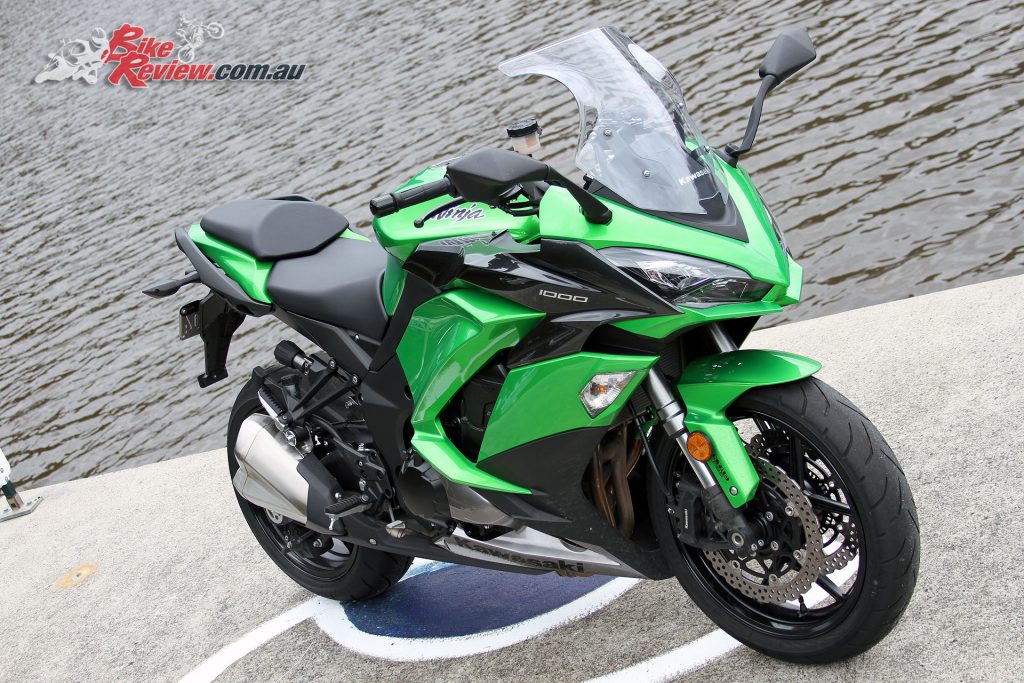
2017 Kawasaki Ninja 1000 – stunning styling from any angle makes this the touring version of the ZX-10R in many ways.
The new fairings and front-end are a definite step towards Kawasaki’s ZX-10R model and is more angular than the previous model, lending the Ninja a more futuristic and aggressive profile. LED headlights provide lighting and are sunk into the fairing, which features ‘chin spoilers’. Let’s just say it’s a cool front-end and leave it at that!
Without the optional Givi colour matched panniers the only thing that really gives away the Ninja 1000’s touring nature is the larger rear grab rails, which incorporate the pannier mounting system.
Having been impressed with the previous Ninja 1000 featuring the panniers I was a bit disappointed we didn’t get to check the new ones out, or see how they look on the bike.
Jumping on board, the Ninja’s low seat height is very apparent, with Kawasaki stating it’s been dropped by over 30mm thanks to a number of changes. Reach to the rubber clad ‘pegs is sporty but not cramped, while the separate ‘bars are mounted to the tops of the forks and surprisingly tall.
It’s a bit of a stretch to reach them, however with that said, it’s not uncomfortable. Both brake and clutch levers are adjustable, while the aggressively styled double-bubble screen is still three-way adjustable without tools but has been revised for better wind protection. This mirrors the fairings which are 28mm wider on each side, with wind protection being great.
In fact with the wet Spring weather we had for the entire test period I found the fairings actually provided quite good protection from the rain as well, if you were moving. All bets are off in Sydney’s stop and start traffic where the rain gets you every time you stop, but the bike actually handles even the worst of traffic with ease.
The temperature meter on the dash would go up, but there was minimal noticeable heat to me as the rider. Low speed stability is also exemplary with a bit of clutch at really low speeds.
Setting off from Kawasaki HQ the Ninja 1000’s urban road manners are exceptional, with easy steering through weight transfer and body language, while stability even at an absolute crawl is great.
The in-line four-cylinder is torquey, with linear power delivery and I dialled the traction control (KTRC) up to level three and put power to Low, as it was rain, drizzle and occasionally light showers.
When the roads opened up a bit as peak hour traffic receded I found the gearbox on this very new machine to be clunky, benefiting from loading the gear lever and just enough clutch to allow it to slipinto gear. The clutch action is light and has good feel.
Tall gearing with good low down torque also allowed me to be relatively lazy with the gears in the city, using second for much of my riding and that extends up to the faster sections signposted for 70-80km/h.

2017 Kawasaki Ninja 1000 – Long distance trips are definitely not a problem, with a comfortable seat offering plenty of room to move around on
Out on the open road is undoubtedly where the Ninja 1000 belongs though, with easy freeway performance that benefits from great wind protection thanks to the screen and redesigned fairings, with a comfortable perch.
Spending an entire day in the saddle while riding and taking photos I did end up uncomfortable, but that’s keeping in mind I had a full camera bag and tripod strapped to my back, meaning I couldn’t move around, or back into the seat, as I did on shorter rides of an hour or two. For the shorter rides, unencumbered by 10+kg of camera gear, comfort was ideal.
Heading for some funner sections, and now in Full power mode the acceleration from aggressive throttle use became apparent with the shift light soon starting to flash at me. It was also set a fair way off the redline, so I ignored it! With more than enough power on hand for my 70kg and gear and propel me to eye-popping speeds, I was having a ball.

2017 Kawasaki Ninja 1000 – Display, showing analogue tachometer, central gear indicator and clock, and right side digital display with speed, Mode and KTRC settings.
Jumping onto the freeway at one point and opening the throttle to merge in, in front of a few trucks, was certainly demonstration enough that the Ninja has plenty of go, with the wind protection and power delivery actually helping to reduce the impact and sensation of speed. Then you look down at the speedo…
The suspension is a combination of 41mm forks and single horizontal back-link shock, which offered a smooth bump absorbing ride over regular road surfaces and soft but reasonable support on the front end, only becoming a bit overwhelmed at the rear when the high speed compression damping met particularly poor and extended road surfaces, causing some sharp seat bump.
My first ride through the local twisties I actually struggled somewhat with the Ninja’s cornering, which the bike has a tendency to stand up through the corners. It took me a bit of riding to alter my style to suit, but once I did so the bike handled my regular pace with ease, feeling a bit more like an adventure tourer in this regard, requiring a bit of muscling to keep it on its side through turns. It is certainly not ideal and seems the revised rear suspension link to lower the seat height has had a negative effect on the handling of the bike. It needs work in that regard. Jeff was more critical than me but then again he is more experienced.
The front brakes are powerful but don’t offer exceptional bite which keeps everything smooth and controllable, while the rear brake was strong enough for slow speed stopping in traffic or stability through the corners.
Of particular note for me was the rear brake lever’s position, which meant I could comfortably cover it through a corner, without having to totally shift my positioning and foot to do so. Having to mentally make a note to lift my foot/toes enough to keep them off the brake lever is a pet hate of mine, especially if I can’t adjust the positioning.
The easily modulated front brakes also made transitioning into corners an easy proposition in the twisties, although I did find I needed to be careful on the throttle in these situations.
While rolling off the throttle would easily and smoothly shed speed, if you went too low in the revs or were in too high a gear the fueling would reach a point where it would close, and transitioning back onto the power would unsettle the bike.
It was characterised by good feedback through the throttle when you neared that point, and was probably most noticeable due to many sections of road covered in flowing water, gravel and sand, where in dry weather you’d simply power on through.
The Low and High power modes alter power delivery, with Low smoother and less aggressive. I was using Low in urban areas with traffic, and Full for open roads, twisties and the freeway, while the KTRC system added additional peace of mind in the often poor conditions during testing.
For my normal riding habits and speeds I didn’t notice a significant difference between traction control levels one and three, with the system most noticeable when conditions became a bit wet and slippery. The system definitely works well and is nice to have.
Likewise the grip and braking performance on offer was more than controllable for even the rainy conditions we had. I didn’t have the conditions to fully take advantage of IMU equipped ABS, although I can certainly see the benefit of such a system for a sports tourer. Especially if you’re fully laden two-up and come across the unexpected mid-corner.
Likewise the traction control plays a similar role, especially taking into account being equipped with an IMU that means both traction and braking can be effective with the bike leant over.
Conclusion:
Overall the 2017 Kawasaki Ninja 1000 is potentially a great machine, built around the linear in-line four cylinder which now benefits from the latest electronics system. Styling and build quality are top notch, with adjustable suspension, top notch brakes and great comfort.
Little touches like the adjustable screen and levers, great switchblock controls and easy luggage addition are icing on the cake. Especially when you look at the asking price of $16,299 plus on roads.
There’s incredible performance on offer for that price, with my only negative note being that very different front end feel and our press bike had some inconsistent idling issues. It definitely takes a different approach to riding the Ninja 1000 through the twisties, but wasn’t noticeable at lower urban speeds or in a straight line of course.
Whether it could be dialled out within the standard suspension is another question, but I’d encourage anyone interested to try and get a longer test ride so they can get used to the front end and get a proper feel for the bike.
The Ninja 1000 is a real cracker in all other regards!
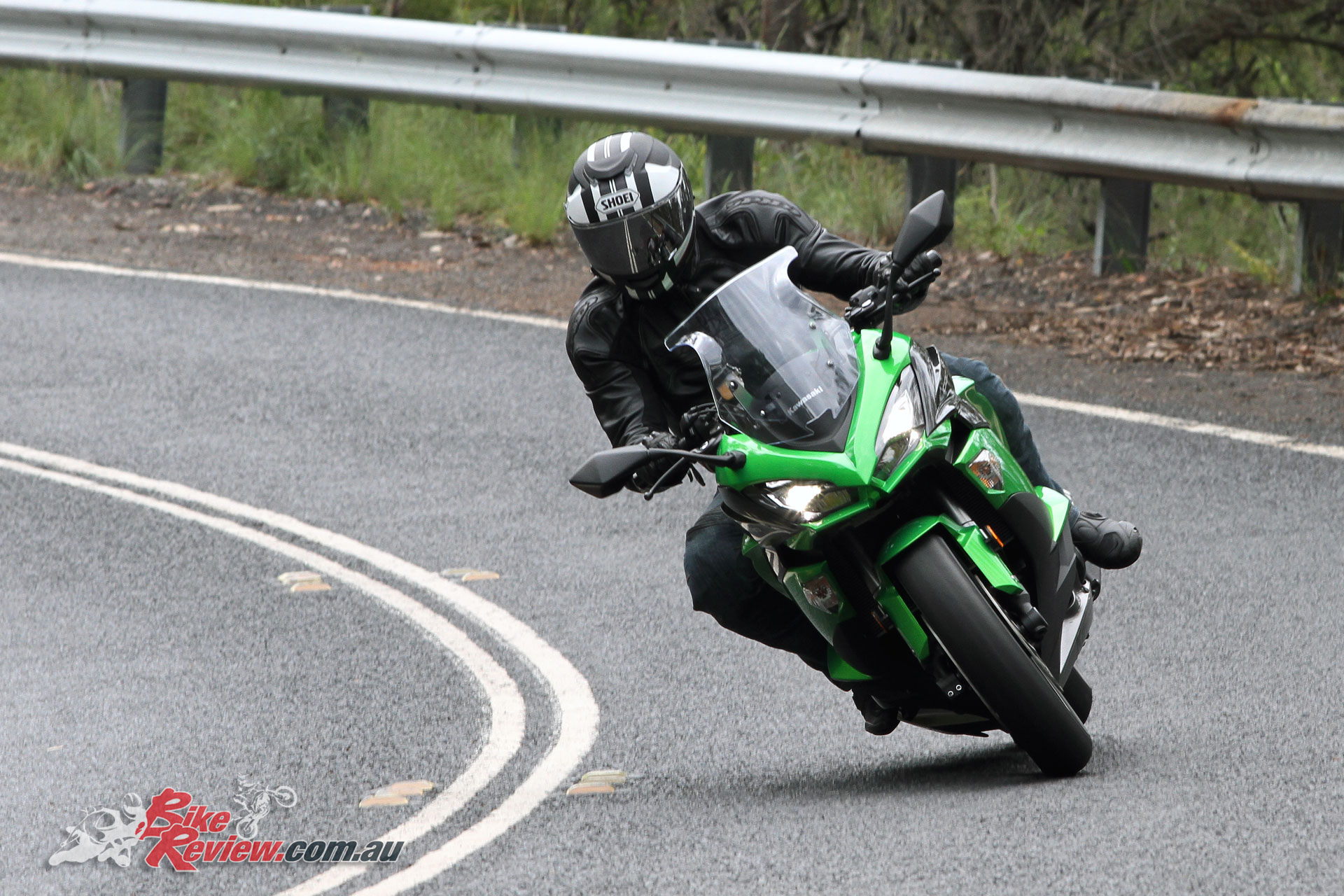
The Ninja 1000 takes some getting used to in the corners, with a tendency to stand up, it needs muscling through the turns to get the most out of it. The lower rear ride height and low seat height the most likely culprit.
SECOND OPINION
I’ve been looking forward to riding the revised Ninja 1000 for some time now, ever since it was revealed late last year. The new sports styling is what the bike really needed and to have the addition of the ZX-10R electronics, on a slightly smaller scale, really makes the Ninja 1000 one the most advanced, if not the most advanced, sports tourer to come out of Japan.
Now 41, I’m not getting any younger, and with plenty of injures from decades of racing I enjoy touring style bikes more these days – but I still need sportsbike performance to get my fix and on paper the Ninja 1000 has it all covered. But how did it ride?
Sitting on the new model, the third generation of the Ninja 1000, I immediately felt like I was too tall for the bike and that my legs were too long. At 183cm, I’m not overly tall, but the seat felt very low and my knees high. The seat, I felt was really comfortable and I felt locked into place. The tall ‘bars feel nice and well positioned and the view is good. The mirrors are miles away but great and the general layout, including the new dash, is ergonomically well done. The screen is perfect.
I tried the bike on Full power, Low power and all three traction control pre-sets plus Off. In Full power with the TC on 3, there was a lot of intervention and the way the power cut was harsh. This threw the bike out of balance. I can only assume it was due to the large amount of torque on tap and the patchy conditions, and possibly some front wheel lift at the time. I dialed this back and worked my way through the settings and in the end for hard acceleration and cornering Full power with TC on 1 or Off was best and general riding Low power and TC on 1 was the smoothest. The throttle was quite steppy in Full power mode so unless riding at full tilt, sticking to Low power was the most comfortable option.
The power is strong, turbine-like and seemingly endless and I’m sure the gearbox would smooth out in shift with a few more miles on the bike. The slipper clutch improves corner entry and the only thing I wanted engine-wise was a quickshifter and a loud exhaust!
Unfortunately I didn’t find the cornering on the new Ninja 1000 to be quite as good as the previous model. It feels low in the back and it is. It wants to stand up mid corner, where the previous model would track through a turn nicely. This could be fixed, I’m sure of that… and I would be keen to try again if Kawasaki have a play around with the press bike, as the rest of the bike is sensational.
The braking system is high-end and well suited to the bike. I always say you can never have big enough brakes but the chassis has to cope and this set-up is well balanced, plenty of power and feel and the ABS works a treat as I tested out in the video.
I would have liked the panniers to have been fitted to the bike to give a true feel of how it handles with a bit of weight in them. As for a pillion rider, we did not get the chance to test that but the grab rails are large and the seat looks the part.
Overall I liked the engine, styling and electronics over the chassis but I could sort that out and the styling is hard to beat, as is the price, which is just incredible given the amount of quality extras the bike has. If you are after a sports tourer, don’t go past testing the Ninja 1000 but as Kris said, make sure you get a bit of time on the bike, more than a normal demo test, to truly get a feel for it.
2017 Kawasaki Ninja 1000 Tech Talk:
Now in its third iteration, an even more polished Ninja 1000 continues to offer the comfort and convenience in a sports touring package. The new model features increased touring performance thanks to improved wind protection, greater comfort and the clean-mount pannier system. All-new Ninja family styling deepens its sporty image, while the Ninja 1000 is loaded with the latest electronics technology that Kawasaki has to offer.
All-new bodywork includes a sharper front cowl which more closely resembles Kawasaki’s Ninja supersport models, including new LED headlamps and chin spoilers. The two-piece fairings are also 28mm wider on each side, offering increased wind protection for the rider’s legs, which is particularly aimed at touring comfort.

2017 Kawasaki Ninja 1000 – The double bubble-screen now offers better wind protection and remains three-way adjustable, by hand
A new, taller (15mm) double-bubble windshield contributes to the increased wind protection and apart from looking particularly sporty, is adjustable by hand (without tools), with three available positions to suit rider preference.
Ergonomics are also revised, with separate raised ‘bars offering an upright seating position and taller front end feel. The seats have also been updated for better comfort and more support and padding. The pillion seat has also been reshaped to help the pillion stay in position, while the passenger grips include pannier mounting attachments.
Clean-mount Givi panniers can be easily added to the bike requiring no additional fitment components, and are available colour matched to the bike, with a locking system.

2017 Kawasaki Ninja 1000 – The four-cylinder donk offers linear power and great torque with predictable fueling
The updated 1043cc liquid-cooled in-line four-cylinder includes an Assist and Slipper clutch, and has now adopted an advanced electronics system derived from that found on the ZX-10R and includes the KCMF (Kawasaki Cornering Management Function), Kawasaki’s latest IMU-enhanced electronics package.
Power output is 105kW (141hp), with 38mm downdraft throttle-bodies offering strong linear low-end performance, with oval sub-throttles keeping the engine thin between the rider’s knees.
Kawasaki boast revised ECU settings contributing to smoother power delivery, although the Ninja 1000 always delivered in this area, while Euro4 emission requirements are now met on the 2017 model. A resonator in the air-box is also designed to reduce noise at lower rpm, while boosting the higher rpm audio track.
A compact Bosch IMU (Inertial Measurement Unit) gives a real-time picture of chassis orientation and the KCMF monitors engine and chassis parameters throughout the corner – from entry, through the apex, to corner exit – modulating brake force and engine via the KTRC (including traction and wheelie control) and KIBS (including pitching and corner braking control) systems.
The KTRC (Kawasaki Traction Control) offers three levels of adjustability and can be turned off, while power modes offer High and Low power settings.
KIBS incorporates corner braking control, modulating brake force to counter the tendency of the bike to stand up when braking mid-corner, with radial-mount Monobloc front calipers and a radial front brake master-cylinder offering strong front end brake performance.
Keeping an eye on the settings is via a all-new instrument panel layout, featuring a large analogue tachometer flanked by warning lamps on one side, and a gear position indicator and multi-function LCD screen on the other. Also included is a programmable up-shift light and the tachometer needle changes colour once you reach your upshift parameter.
An aluminium twin-tube frame design features frame beams that go over engine, allowing a narrow construction that is easy to grip with the knees, and uses the engine as a stressed member. The frame is a five-piece cast aluminium construction uses four engine mounts. All engine mounts are rigid except the upper rear crankcase mount, which is rubber.
The rear frame is a three-piece aluminium die-cast construction and allows the side covers to be eliminated. This also allows the width under the seat to be narrower, offering riders a shorter reach to the ground.
41mm inverted front fork features stepless compression and rebound damping and spring preload adjustability aimed at sporty performance and comfort.
The rear shock features rebound and preload adjustability, with a remote preload adjuster. Revised shock settings and linkage ratio offer suppler suspension action for improved bump absorption and firmer cushioning. The new linkage also assists in a lower seat height.
300mm petal brake discs are gripped by opposed four-piston radial-mount monobloc calipers with differentiated diameter pistons of 32mm/30mm.
The machined monobloc calipers feature an alumite1 coating and are laser-etched with a Kawasaki logo, adding to the bike’s high-quality sporty looks. The rear brake features a single piston, pin-slide caliper gripping a 250mm petal disc.
Wheels are lightweight supersport-style six-spoke wheels contributing to a sporty image and low unsprung weight.
SPECIFICATIONS: 2017 Kawasaki Ninja 1000
Price: $16,299 + ORC
Warranty: Two-year, unlimited kilometre
Colours: Candy Lime Green and Metallic Carbon Gray; Metallic Spark Black and Metallic Graphite Gray
Claimed power: 105kW[143hp]@10,000rpm
Claimed torque: 111Nm@7300rpm
Wet weight: 235kg
Fuel capacity: 19L
Engine: Liquid-cooled, four-stroke in-line four-cylinder, 1043cc, 77 x 56mm bore x stroke, 11.8:1 compression ratio, DOHC, 16 valves, four 38mm oval subthrottles
Gearbox: Six-speed, return
Clutch: Wet multi-disc
Chassis: Rake: 24.5°, Trail: 102mm
Suspension: 41mm forks, compression, rebound damping and spring preload
adjustability, Horizontal Back-link, gas-charged rear shock, rebound damping and spring preload adjustability
Brakes: KIBS, Dual semi-floating 300mm front petal rotors, dual radial-mount monobloc four-piston, single 250mm rear petal rotor, single-piston caliper
Wheels & Tyres: 120/70 ZR 17, 190/50 ZR 17
Dimensions:
Wheelbase: 1440mm
Seat height: 815mm
Overall height: 1185-1235mm
Overall width: 790mm
Instruments: LCD, multi-function display
2017 Kawasaki Ninja 1000 Gallery:
The Verdict | Review: 2017 Kawasaki Ninja 1000

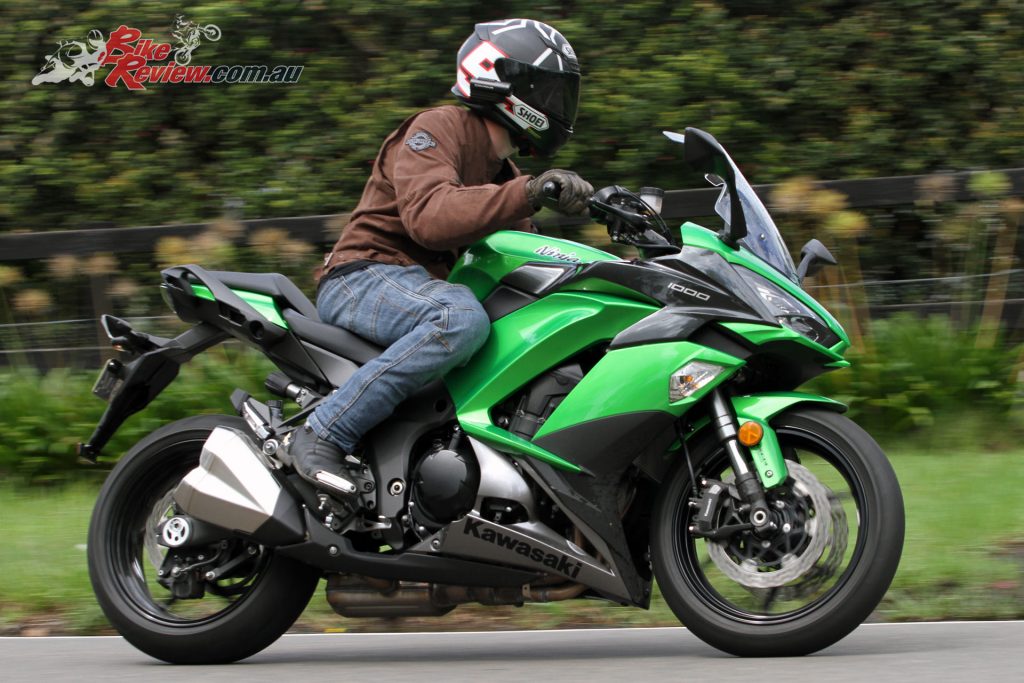

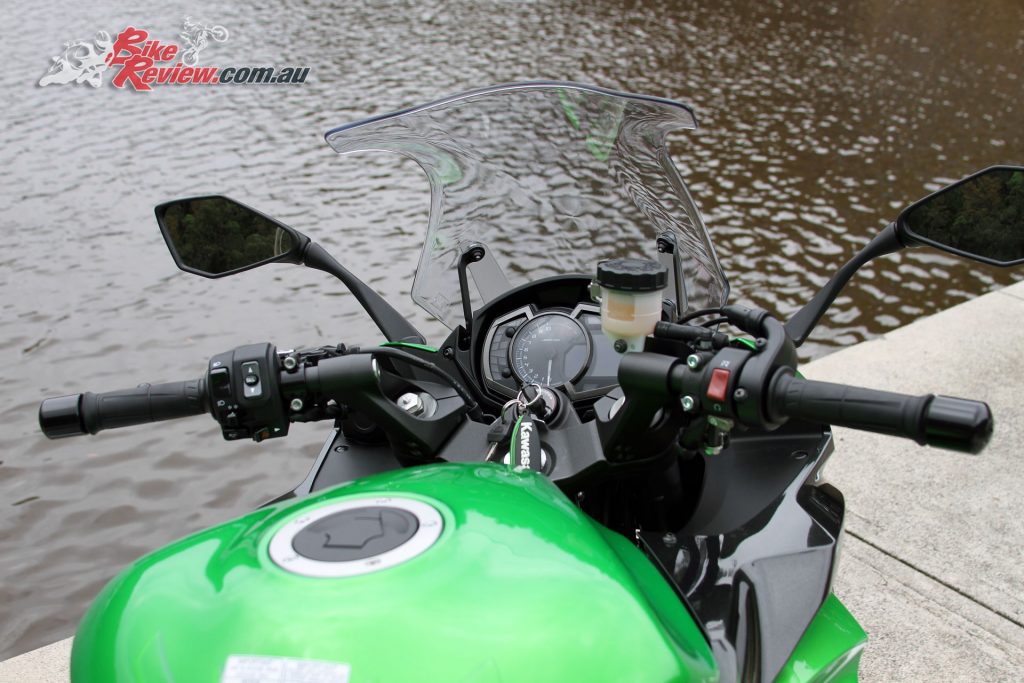

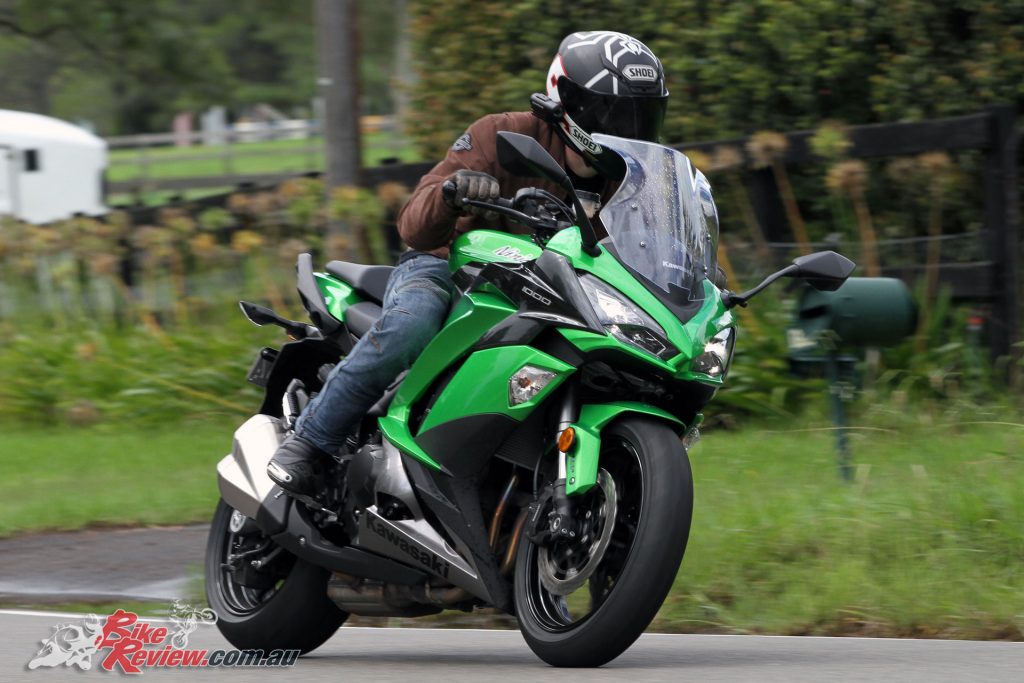
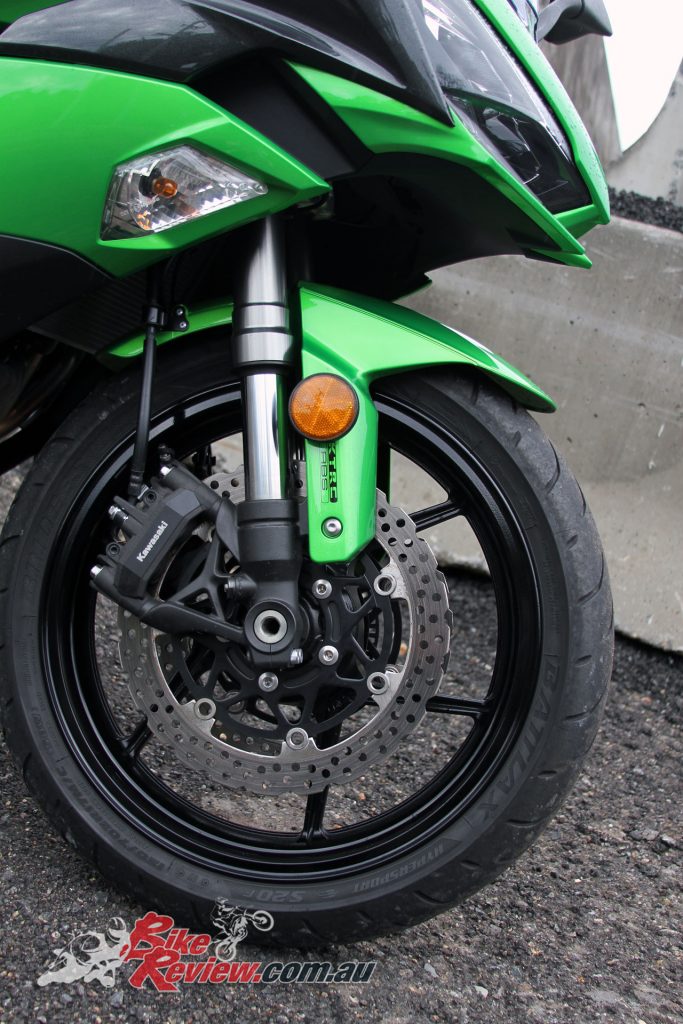
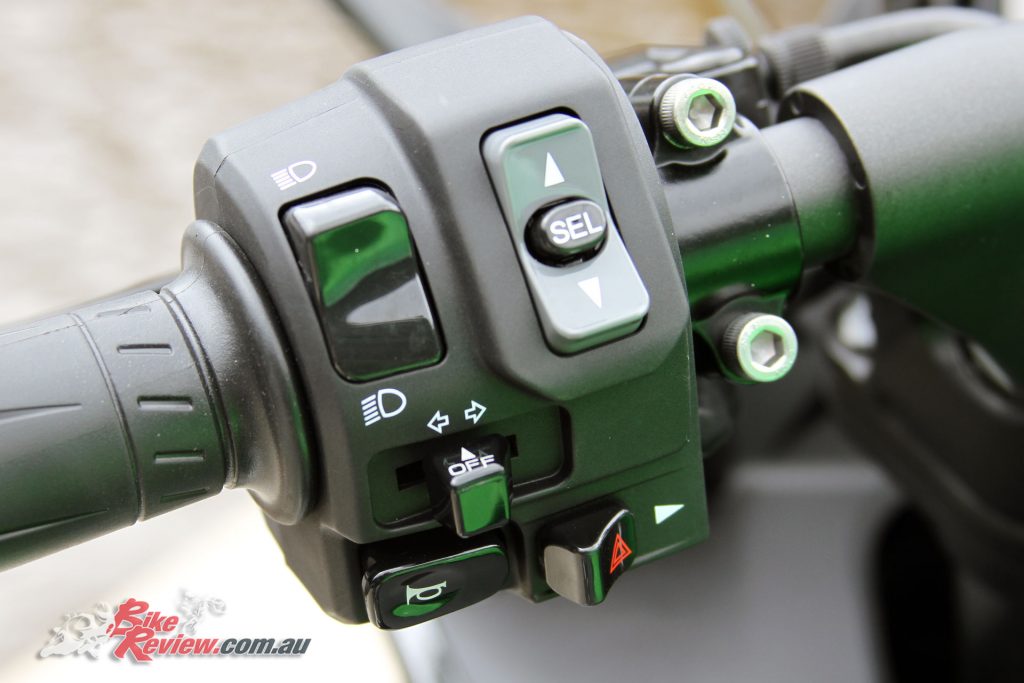
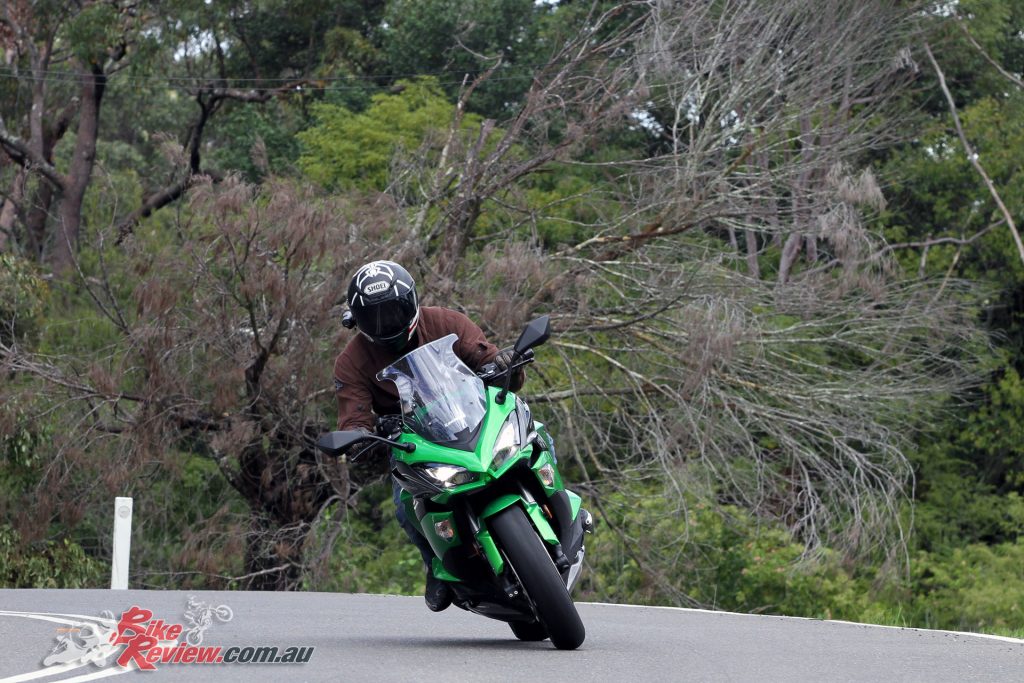



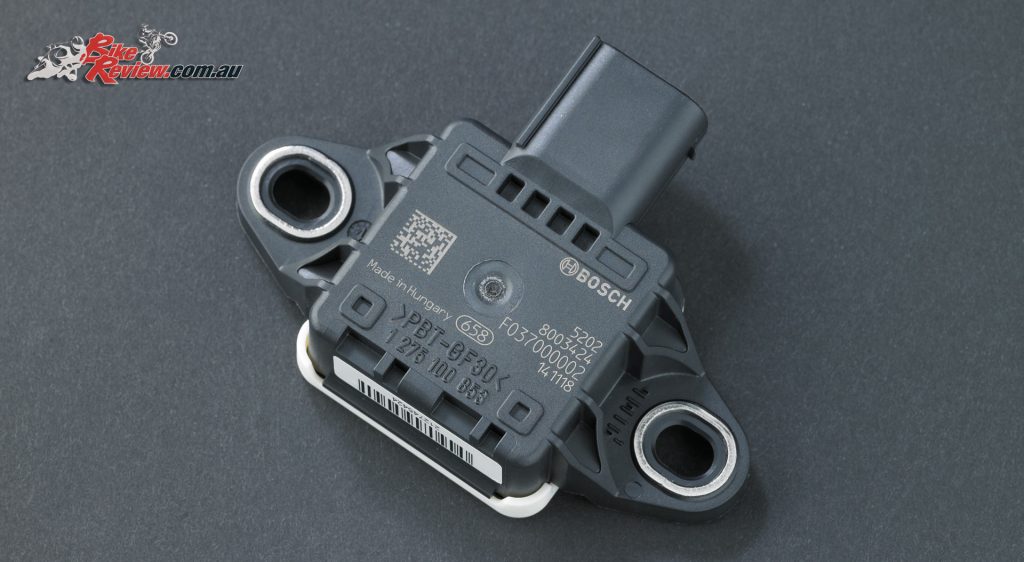
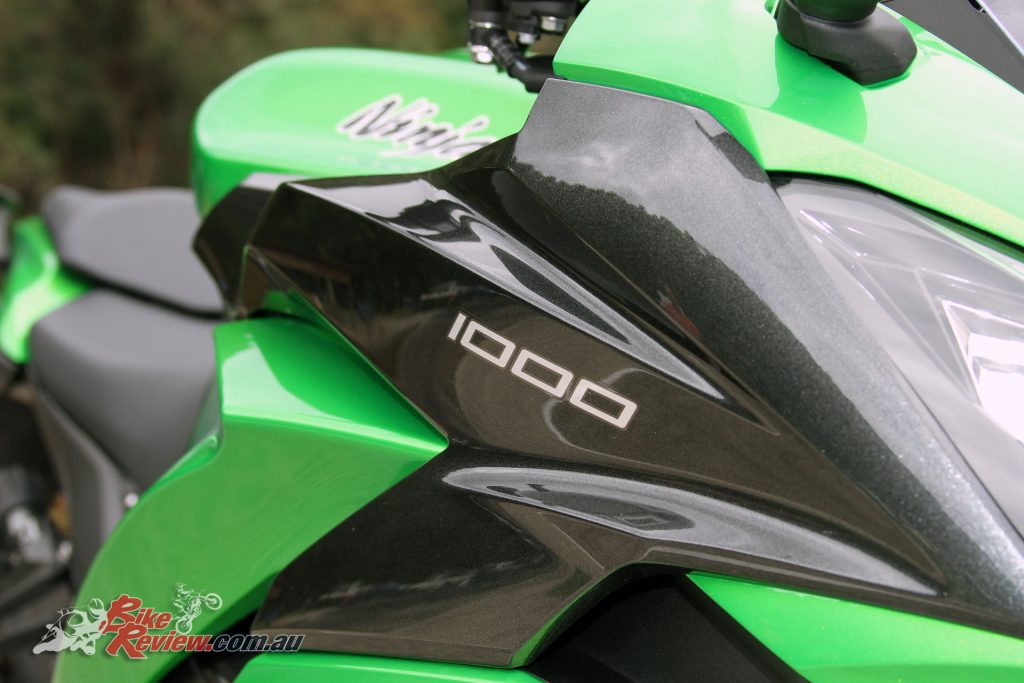



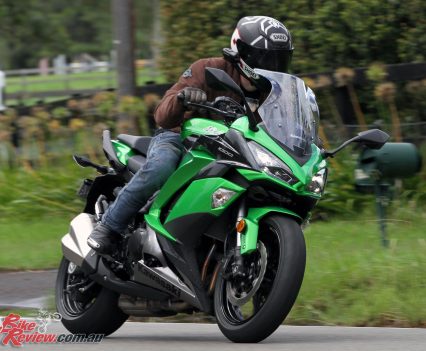
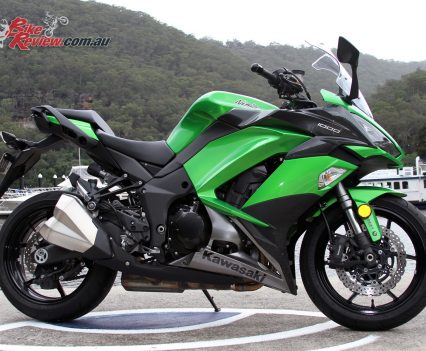
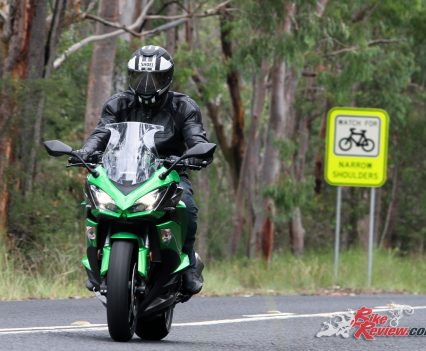

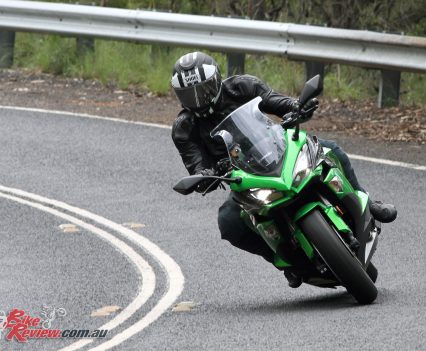



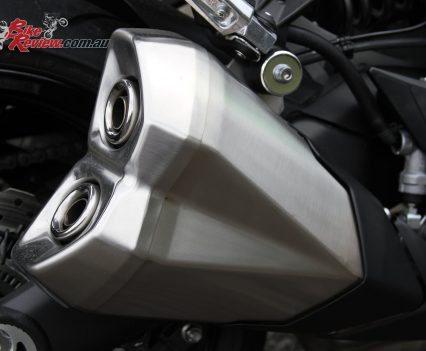
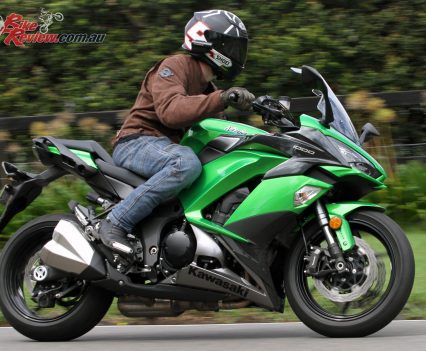

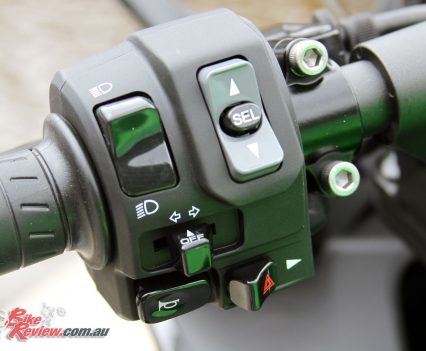
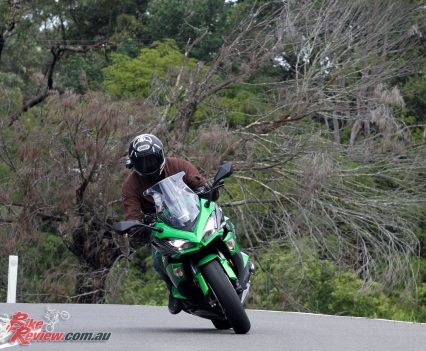
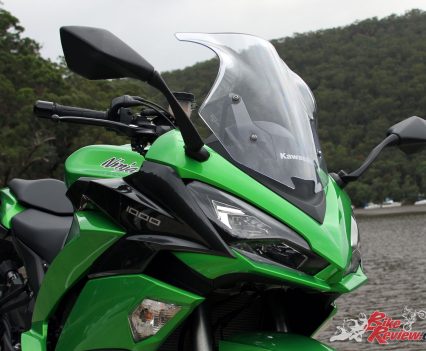




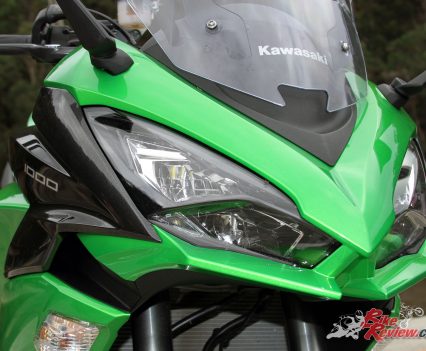
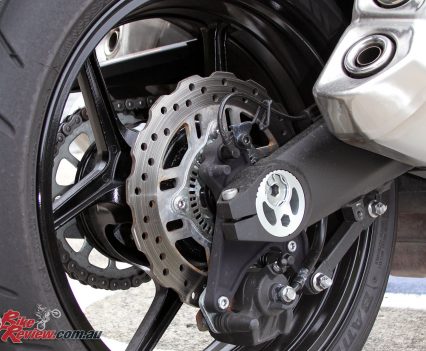
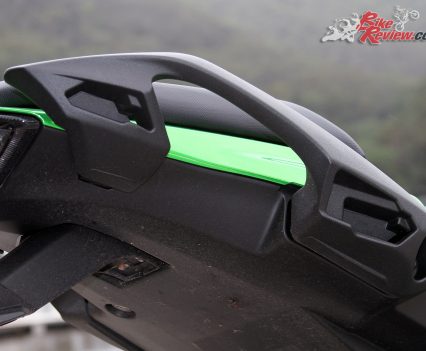
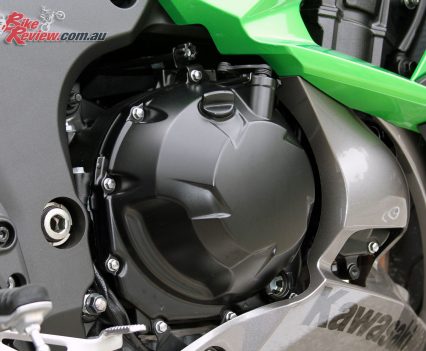
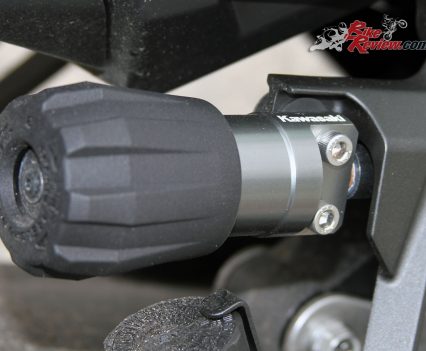
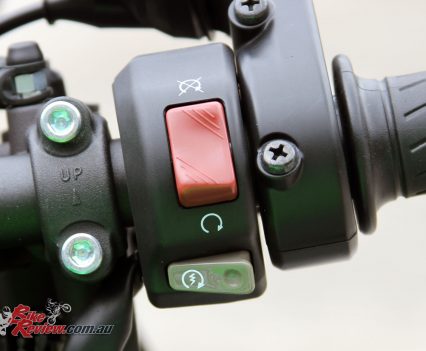

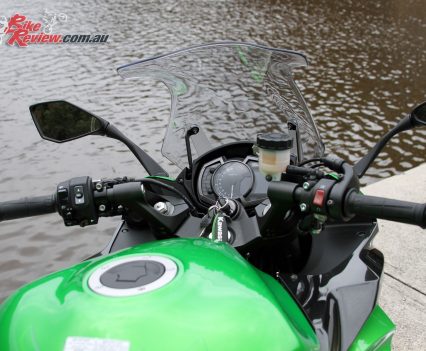
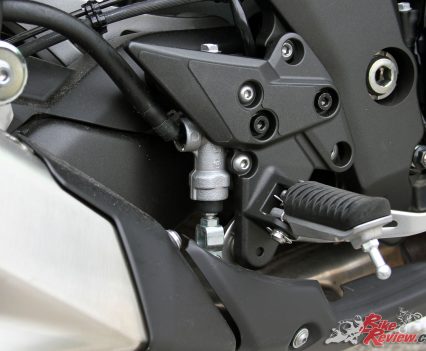
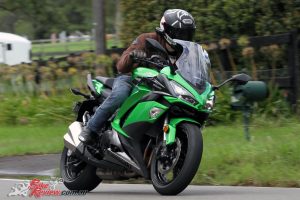
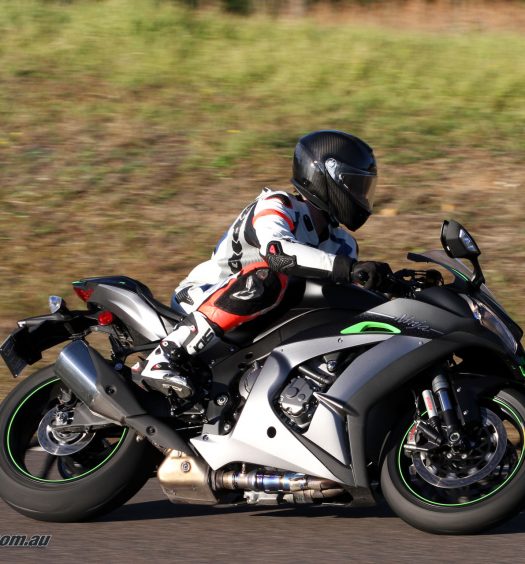
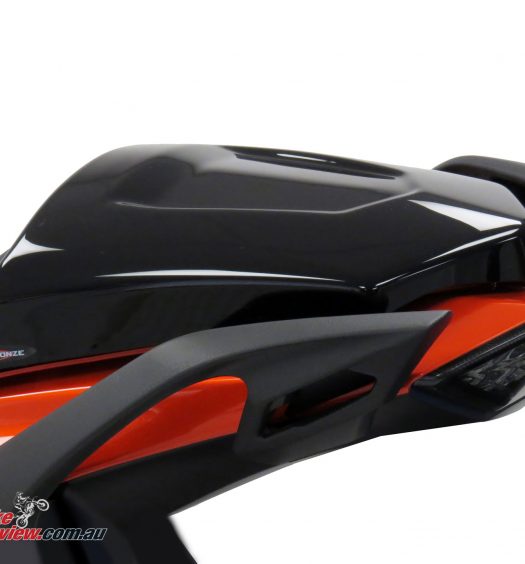


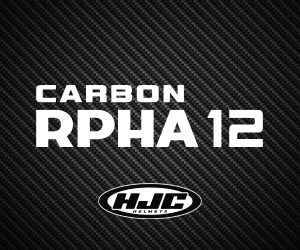

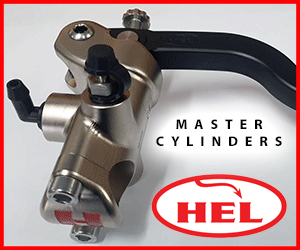
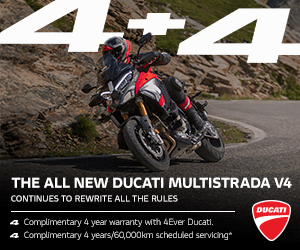





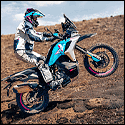

November 5, 2018
Hi kris
I recently viewed your review on the ninja 1000 and am thinking of buying one. For a budget of 20 grand, what bikes would you compare to the sports tourer to as value for money and easy riding. Any suggestions would be greatly appreciated. I live a few hours out of sydney so test riding would be a trip down and im not sure of descent locations and shops to visit
November 7, 2018
Hey Wally, that’s a great question. The Ninja 1000 stands out for great value, with competition from the Suzuki GSX-S1000F and Honda’s VFR1200F or VFR800F, as well as Ducati’s SuperSport, which all sit below that mark. The BMW F 800 GT should also be in that region too.
There’s also options like the Yamaha MT-09 Tracer, which is a more upright sports tourer, and might not be what you’re after, but I thought I’d mention it just in case.
From there you move up to more expensive machinery with a lot of the modern sport touring machines.
With test rides it’s a bit harder as dealers tend to be spread out, and it comes down to what kind of test ride they’ll give you! Near me there’s MotoHUB in Castle Hill who do Kawasaki, KTM and Suzuki, while we often deal with Worthington Motorcycles on the Central Coast for BMW.